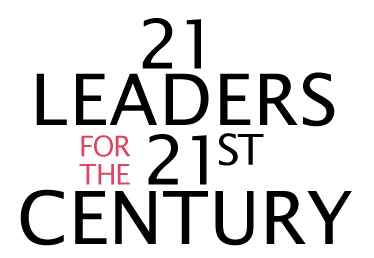Navigating Sex Equality Under the ERA: Balancing Inclusion and Legal Scope

In the landscape of gender advocacy and social justice, ongoing discussions about the expansive nature of gender terminology and the legal implications of sex discrimination have brought the Equal Rights Amendment (ERA) into the spotlight. The ERA aims to eliminate sex-based discrimination and has garnered support for its intent. However, the evolving understanding of gender dynamics has led to complex debates over the inclusion and legal scope of the proposed amendment.
‘Sex Discrimination’ as a Term
Bettina Hager, DC Director of the ERA Coalition and Fund for Women’s Equality, delved into the intricate intersection of legal definitions and social perceptions. “In the advocacy and social justice world, gender is the more expansive term, but legally, sex is an expansive term, and includes gender,” Hager explained. She emphasized the nuanced interpretation of sex discrimination, which encompasses both biological sex and gender identity, acknowledging that discrimination often arises from stereotypes linked to both aspects. This intricate interpretation transgresses the conventional boundaries of gender and reaches into the lives of transgender individuals grappling with bias stemming from non-conformity to these stereotypes. The legal domain carves out a space for such protection, underscoring the depth of the term “sex” in anti-discrimination laws.
“The reason we’re not advocating for a shift to the term ‘gender’ is rooted in the concept of legal jurisprudence, also known as precedent. This term has been historically linked to ‘sex discrimination’ and has protected transgender individuals. We don’t know how gender discrimination would be interpreted by the courts,” Hager added.
Ting Ting Cheng, Director of the ERA Project at Columbia University Law School, added that since the US has the oldest Constitution in the world, it’s also the hardest one to change. Hence, we need a modern way of expressing equality in this country. “In 2020, the Supreme Court already told us that the definition of sex also includes beyond just the binary women and men,” Cheng said. “It also includes gender minorities, gender expression, and gender identity. The exciting thing about the ERA,” she continued. “is that it’s closer than ever to being a part of the Constitution and being interpreted by courts and Congress to embrace the concept of equality that also includes sexual minorities and LGBTQ+ communities.”
Jennifer Tucker, Senior Policy Consultant at the ERA Coalition, also peeled back the layers of legal terminology and its wider implications by spotlighting the coherence between gender and sex within prevailing laws, like Title VII (governing employment) and Title IX (safeguarding educational institutions). These legislative cornerstones, which primarily use the term “sex,” intend to encompass the full spectrum of gender identity and expression. But the harmony in the language isn’t always mirrored in comprehension, stoking the debate over whether explicit inclusion of “gender discrimination” is warranted. “All of the existing laws use sex, although everybody is protected against discrimination based on sex, whether it’s gender, or whatever,” Tucker clarifies. She added that existing laws focus on protection against discrimination based on sex, which encompasses gender-related issues. These laws apply to various contexts, ensuring safeguards against gender-based discrimination, Tucker explained, underlining that established legislation recognizes the broader context of gender dynamics.
“If the courts or if someone were to say that discrimination against transgender people is not covered under sex discrimination and is covered under gender discrimination, then all of those Titles (such as VII and IX) would have to be reopened. That’s going to be a really hard fight. Even the trans community is always nervous when you open up these Titles because the fear is then that the protections that currently exist could actually be weakened in other areas,” Hager added.
Balancing Terminology Without Eroding Existing Protections
Should the ERA encompass “gender discrimination” as a distinct clause? The ERA Coalition confronts this complexity head-on. It grapples with the dichotomy between advancing transgender rights through tailored language and preserving the protective armature that decades of “sex discrimination” legislation have erected. It forms an intricate tango between identity acknowledgement and legal safeguarding ensues.
“After the 2016 election, we considered the possibility of starting anew with a more expansive, inclusive bill.” Hager continues. “Notably, however, legal scholars were the ones who introduced the distinction, not us. Gender discrimination wasn’t isolated as a separate category; rather, the language was carefully crafted to clarify that gender discrimination could be encompassed within sex discrimination. The phrasing centered on ‘sex,’ with parentheses including elements like sexual orientation, gender identity, pregnancy, race, and ethnicity for added clarity. The goal was enhanced clarity. Therefore, while within the social justice and gender equality community we do employ ‘sex and gender equality’ for effective communication, we understand the nuanced nature of these terms, ensuring a more inclusive dialogue.”
LGBTQ+ and the ERA: Partners in Progress
The conversation widens to the evolving landscape of LGBTQ+ rights and the ERA’s symbiotic role in amplifying these rights. Zakiya Thomas, President and CEO of the ERA Coalition and the Fund for Women’s Equality, stressed that the ERA’s transformational power extends beyond legislation, catalyzing a cultural sea change that permeates societal perception.
But progress isn’t linear. The ERA Coalition grapples with the crosscurrents of anti-trans laws mushrooming across states, which inject volatility into the ERA’s journey, raising the spectre of counterproductive outcomes. Hager admits that unity holds the antidote to this divisiveness. In a bid to neutralize the opposition’s strategy of division, the ERA Coalition is fostering unified messaging across an array of movements – from LGBTQ+ advocacy to reproductive justice.
Thomas stressed the necessity of unity among marginalized communities to counter divisive tactics used by the opposition. “We need to make sure that everyone understands that we’re all together in this fight. Any attack on one of us is an attack on all of us,” Thomas affirmed, underlining the importance of collaboration among different advocacy groups.
Bamby Salcedo, President & Chief Executive Officer of TransLatin@Coalition, passionately addresses the prevailing misperception surrounding the Equal Rights Amendment (ERA): “Many people have the misconception that the ERA is focused on women, but it is for equal rights. We are trying to advocate for constitutional protection.” She underscores the urgency of enlightening the current generation: “We need to do a better job of creating consciousness about the ERA. This generation needs education about the ERA.” Salcedo highlights a key challenge, pointing out the lack of financial support for lobbying: “One of the challenges that continue to happen is lack of investment in supporting this work as those in the philanthropy sphere do not fund lobbying activities.”
Salcedo’s vision of the ERA’s potential impact on transgender rights is profound: “Having federal protection certainly can improve the healthcare, employment, and housing conditions for transgender people.”
The ERA’s Future: Endurance and Collaboration
Yet the most pressing question is: What lies ahead? The ERA Coalition’s marathon pursuit has endured for over a century. The road to this pivotal amendment has been marred by complexity, political maneuvering, and shifting cultural paradigms. The realist in the room acknowledges that change won’t be instantaneous. “It will happen fast for us and be sudden for the world,” Thomas mused. The optimism that buoys this endeavor is grounded in the unprecedented support garnered and the winds of change that seem to be gathering strength.
As the ERA Coalition persists in its endeavors, its members remain steadfast in their determination to secure constitutional equality. “We’re just not going to let people get away with not moving this forward. So in all of our efforts that we’re making, we’re putting pressure on the archivist to do something, putting pressure on the President to do something,” Hager emphasized.
Tucker expressed optimism about the future, noting that the ERA’s passage may occur unexpectedly but will be a transformative moment for gender equality. “The more we as the ERA Coalition step up for the rights of all of our partners and all of our allies in this fight, the more the other individuals and other groups realize the importance of our issue and how that impacts their lives in their day-to-day existence.”
A 100-Year Struggle Nears the Summit
As the nation evolves and conversations around gender, identity, and equality flourish, the fight to turn the ERA into a federal protection for everyone is also gaining momentum. Armed with fervor and fortified by the diversity within its ranks, equal rights advocates are embarking on an audacious journey to engrave gender equality into the Constitution.
“We need a democratic majority in Congress to lift the procedural hurdles to the ERA, which is honestly within their power to do. It’s not magic. It’s just a simple act of legislation. We need a Supreme Court that can interpret this like the Warren Court. A Supreme Court that can do that once again and really, fully deliver on the promise of democracy and make sure that equality is inclusive of everyone,” Cheng
The journey is fraught with legal intricacies, political hurdles, and cultural shifts, but within the movement’s DNA is a resolve that history will eventually bend toward justice. The curtain may soon rise on an era where the ERA isn’t just an aspiration but a cornerstone of a more inclusive and equitable society.
About the author: Sheetal Banchariya is a fellow in the Sy Syms Journalistic Excellence Program* at Women’s eNews, funded by the Sy Syms Foundation. The Sy Syms Journalistic Excellence Program at Women’s eNews fellowship supports editorial and development opportunities for editorial interns in the pursuit of journalistic excellence.
The Sy Syms Journalistic Excellence Program:
The Sy Syms Journalistic Excellence program at Women’s eNews was launched in 2014 with support from the Sy Syms Foundation. The fellowship provides support and development opportunities for editorial interns in the pursuit of journalistic excellence.
“For a democracy to flourish all voices must be heard.” says Marcy Syms, a founding Trustee and President of the Sy Syms Foundation. “Through its investigative reporting Women’s eNews gets at the essence of good journalism. The Sy Syms Foundation is proud of this collaboration to support today’s newest women journalists.”
As part of its mission to create social change for women and girls through investigative reporting, Women’s eNews helps foster, train, and support the career development of new journalists with a focus on social justice and women’s rights.





